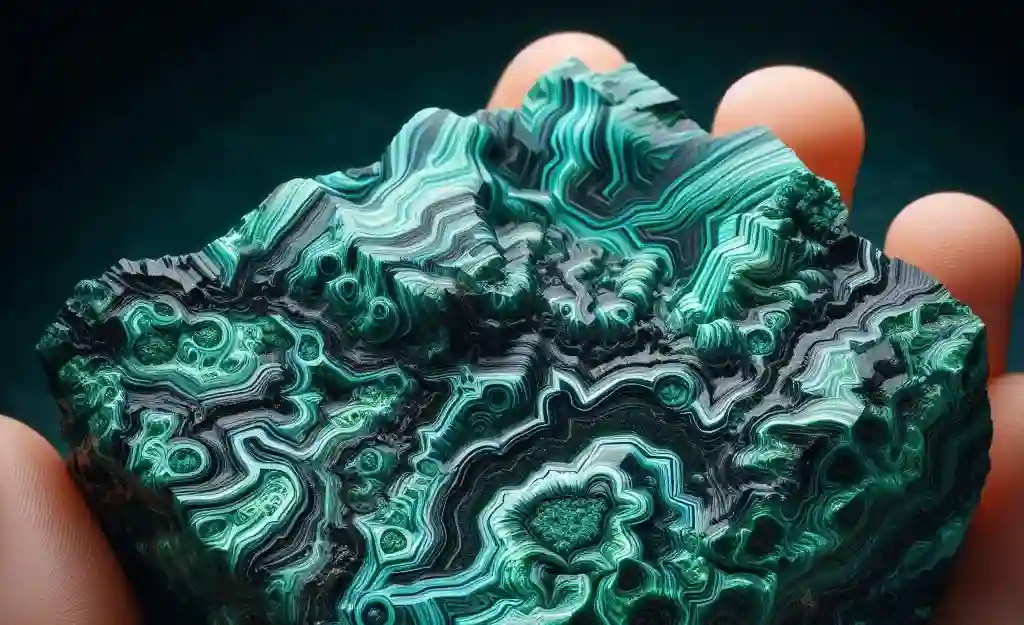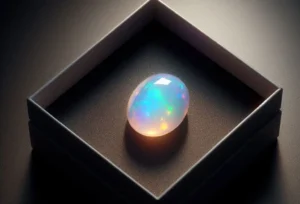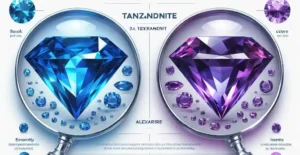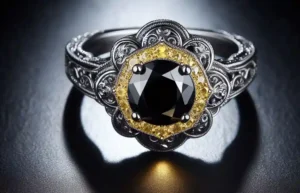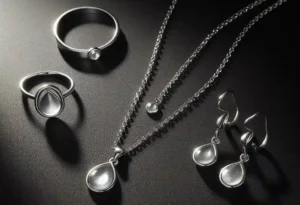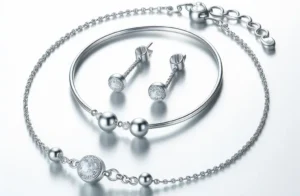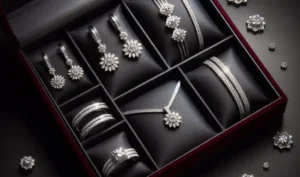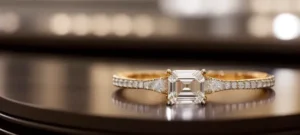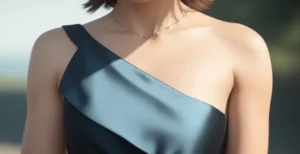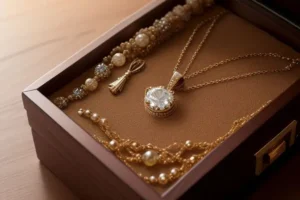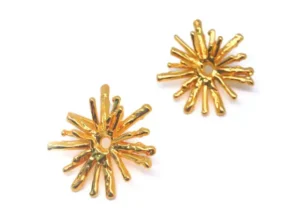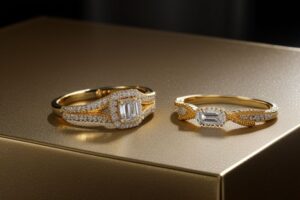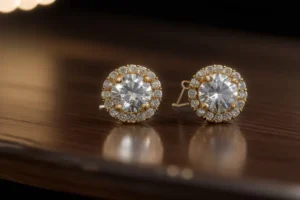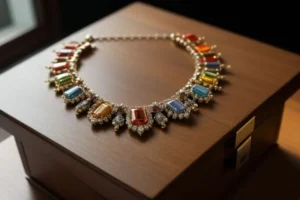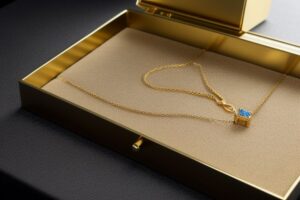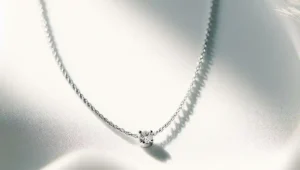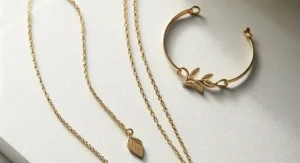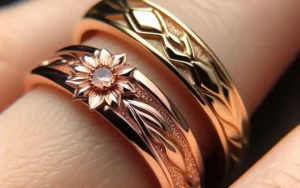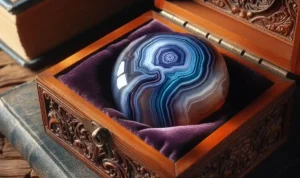How to Tell if Malachite is Real? Malachite has been a cherished stone for millennia with its mesmerizing green swirls and bands.
Used in jewelry, decorations, and even in powdered form for pigments, its unique appearance and supposed healing properties have made it a sought-after gemstone. However, the market is awash with imitations as with many precious stones.
Knowing how to distinguish genuine malachite from a clever fake is essential for collectors and enthusiasts alike. This guide offers practical advice on identifying authentic malachite, ensuring you get the real deal.
How to Tell if Malachite is Real?

– Conduct the Cold Touch Test: Feel for a cool temperature when holding the malachite, indicative of its natural density and thermal properties.
– Examine Under Light: Check for malachite’s characteristic silky to subvitreous luster and observe how its bands and patterns interact with light.
– Perform the Streak Test: Drag the malachite across unglazed porcelain to see if it leaves a light green streak, a sign of authenticity.
– Use Magnification: Look for a fibrous texture and intricate, natural patterns through a magnifying glass or microscope, which imitations lack.
– Assess Heft and Weight: Genuine malachite feels notably heavier than many counterfeit materials due to its dense composition.
– Advanced Testing: For definitive identification, consider spectroscopy or chemical tests to analyze the mineral’s chemical makeup and copper content. This requires professional assistance.
– Inquire About Provenance: Ask sellers about the stone’s origin and request documentation or certificates of authenticity when available.
Understanding Malachite’s Unique Characteristics
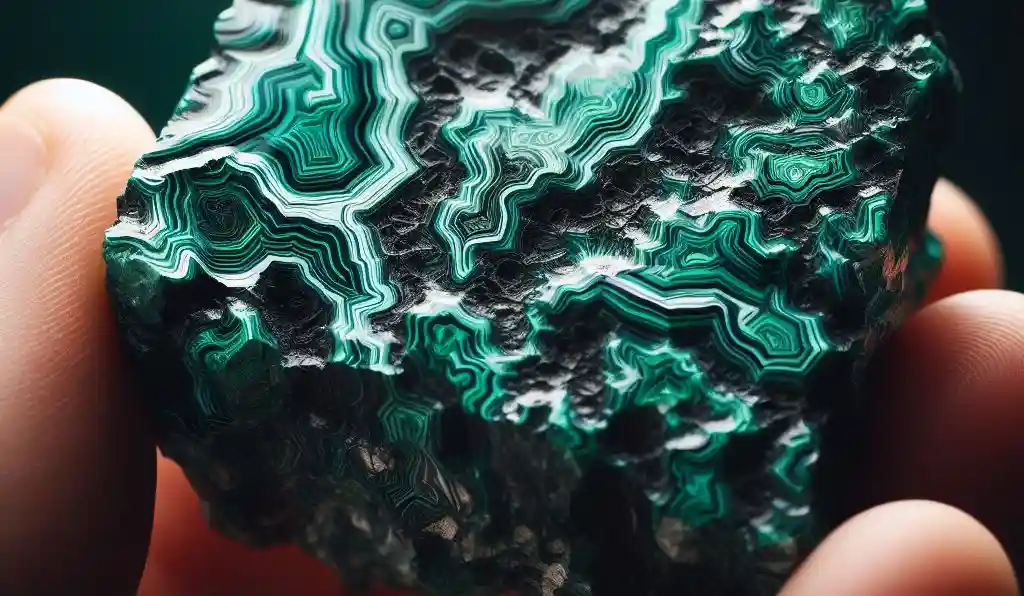
Malachite is a captivating gemstone, notable for its rich, green hues that range from the palest mint to a deep, almost black green. This broad spectrum of color is due to varying concentrations of copper within the stone, which is essentially a copper carbonate hydroxide mineral.
Its formation process in the oxidized zones of copper deposits contributes to the characteristic banded appearance that malachite is famed for. These bands can manifest as swirls, loops, or concentric circles, each pattern unique and inherent to the stone’s natural beauty.
The opaque quality of malachite ensures that it does not transmit light, a trait that distinguishes it from many synthetic imitations.
Additionally, the stone’s texture under magnification reveals a fibrous structure, providing further insight into its authenticity.
This combination of distinctive coloration, pattern, and physical properties makes malachite highly desirable and aids in its identification as a genuine mineral.
The Cold Touch Test
A straightforward method for assessing malachite’s authenticity involves leveraging its thermal properties. Real malachite can naturally remain cool on contact, a characteristic feature of genuine stones.
This phenomenon is attributed to the stone’s dense composition, which allows it to absorb and retain cool temperatures.
To conduct this test effectively, ensure the stone has not been recently exposed to direct sunlight or any heat source, as this can temporarily alter its thermal properties.
Place the malachite in a neutral environment for a few hours to stabilize its temperature.
Once acclimated, gently hold the stone in your hand or against your cheek. Authentic malachite should impart a noticeable chill, distinguishing it from synthetics or imitations, which might quickly assume the temperature of their surroundings. This test, while useful, is best combined with other verification methods for a more comprehensive assessment.
Examining the Stone Under Light
When inspecting malachite under a light source, it’s crucial to observe how the stone’s luster interacts with the light. Genuine malachite exhibits a luster that ranges from silky to subvitreous, providing a unique interaction with light that enhances its natural bands and patterns.
These bands should vary in their reflection of light, adding a dynamic quality to the stone’s appearance. Stones with excessive glossiness or a plastic-like sheen should be approached with skepticism, as these characteristics may suggest synthetic substitutes or treatments designed to mimic malachite’s natural allure.
It is the interplay of light and the subtle variations in luster across the malachite’s surface that help distinguish authentic specimens from imitations, offering an insightful cue for enthusiasts and collectors in their quest to identify real malachite.
The Streak Test
The streak test is a valuable tool for mineral identification, leveraging the principle that a mineral’s powdered form reveals its true color. This method entails dragging the stone across a piece of unglazed porcelain for malachite to observe the color left behind.
Genuine malachite will produce a distinctive light green streak indicative of its authenticity. While this technique can provide clear evidence, proceeding cautiously to avoid harming the stone is imperative.
Applying this test to less visible sections or using available fragments that won’t compromise the stone’s aesthetic appeal is advisable.
This approach minimizes potential damage while offering insight into the stone’s composition. This test, combined with other assessments detailed earlier, forms part of a holistic strategy to ascertain the authenticity of malachite, ensuring enthusiasts and collectors can make informed decisions without detracting from the stone’s natural beauty.
Using a Magnifying Glass or Microscope
When examining malachite under magnification, subtle details emerge that are pivotal in distinguishing real from faux. A magnifying glass or microscope can illuminate these nuances, revealing the true nature of the stone.
Authentic malachite will display a distinctly fibrous texture, a hallmark of its formation. This texture and the depth and integration of its green hues and patterns should be evident.
Contrastingly, imitations often exhibit uniformity in patterns and colors that appear superficial—merely overlaying the surface rather than being inherent to the material.
Additionally, genuine malachite’s intricate patterns—swirls, loops, and concentric circles—are irregular and complex, woven into the fabric of the stone itself.
Look for these patterns to seamlessly transition with a natural flow, without abrupt changes suggesting artificial manufacturing. This magnified examination does not just reveal the stone’s aesthetic appeal and is a critical tool in verifying its authenticity, providing clarity beyond what the naked eye can see.
Heft and Weight Assessment
Assessing the heft and weight of a malachite specimen is an insightful yet straightforward approach to verify its authenticity. Genuine malachite, due to its dense copper carbonate hydroxide mineral composition, feels notably heavier when compared to most counterfeit materials of a similar size.
This method, while beneficial, requires a certain level of familiarity with the weight characteristics of real malachite for accurate judgment. To discern any substantial weight differences, beginners or those with less experience might consider comparing the suspect piece with a verified malachite item.
It’s important to note that while this test contributes valuable insight into the identification process, it should be used in conjunction with other verification methods described previously.
This ensures a comprehensive evaluation of the stone’s authenticity, enhancing the accuracy of your assessment. Remember, anomalies in weight can signal a need for further examination, guiding collectors in their quest to distinguish genuine malachite from clever imitations.
Advanced Testing Methods
Advanced testing techniques offer conclusive evidence for enthusiasts seeking definitive identification of malachite. Spectroscopy, a powerful tool, analyzes the light spectrum emitted or absorbed by a mineral, providing a detailed fingerprint of its chemical makeup.
This method can pinpoint the unique characteristics of malachite, distinguishing it from similar-looking substances or imitations. Additionally, chemical tests, which examine the reactions of the stone to specific substances, can further affirm malachite’s identity by revealing its copper content.
These sophisticated approaches require specialized equipment and expertise in geological laboratories. While more precise, such tests are usually more expensive and may not be necessary for casual collectors.
However, for high-value acquisitions or academic purposes, these methods offer unparalleled certainty regarding the stone’s authenticity.
It is advisable to consult with a professional gemologist or a geological lab experienced in dealing with gemstones to conduct these tests, ensuring the safety and preservation of the specimen.
Trust Your Sources
Securing genuine malachite begins with choosing trustworthy dealers. It’s imperative to conduct thorough research into a seller’s background, inspecting customer feedback and their track record in the gemstone market.
Inquire about the stone’s provenance; reputable sources will readily disclose this information, highlighting their commitment to authenticity. Look for dealers who offer detailed documentation or certificates of authenticity for their malachite offerings.
A solid return policy is also a good indicator of a seller’s confidence in their products. Engaging with knowledgeable sellers who demonstrate transparency about their inventory can significantly reduce the risk of acquiring counterfeit malachite.
It’s a strategy that leans on the integrity of the seller to complement your verification efforts, ensuring that the malachite you purchase is not only beautiful but genuine.
FAQs
Q: What distinguishes real malachite from imitations regarding color and pattern?
A: Authentic malachite showcases various green shades and unique, irregular patterns. The variations in color intensity and banding patterns are natural, contrasting with the uniformity often seen in fakes.
Q: Can I perform any tests at home to verify the authenticity of malachite?
A: Yes, several tests can be safely conducted at home. The cold touch test, observing the stone under light for its luster and pattern interplay, and assessing its weight are effective methods. However, these should be used in conjunction for a more reliable identification.
Q: Are there any visual signs on malachite that indicate it’s genuine?
A: Genuine malachite often has minor imperfections, such as small pits or fissures, which are natural to the stone. These features and its unique fibrous texture observed under magnification can indicate authenticity.
Q: How should I clean my malachite to avoid damage?
A: Malachite should be gently wiped with a soft, slightly damp cloth due to its sensitivity. Avoid using chemicals, submerging it in water, or exposing it to extreme temperatures to preserve its natural beauty.

